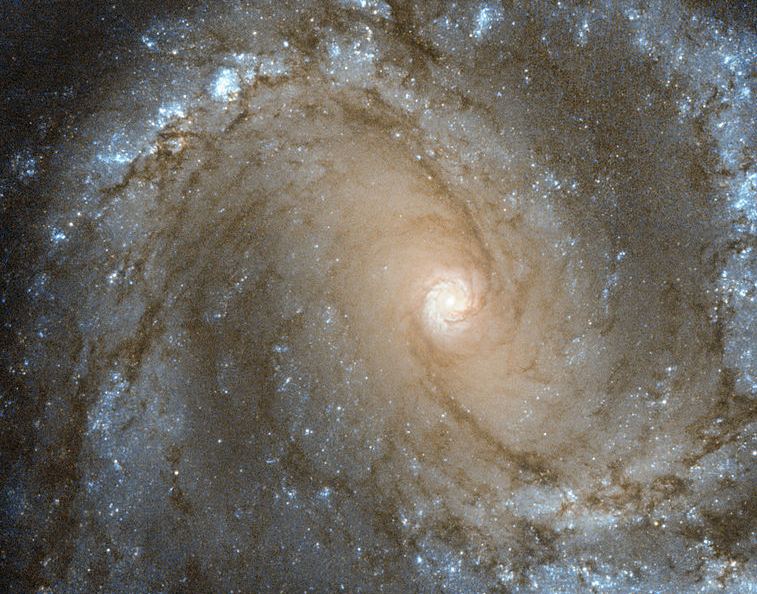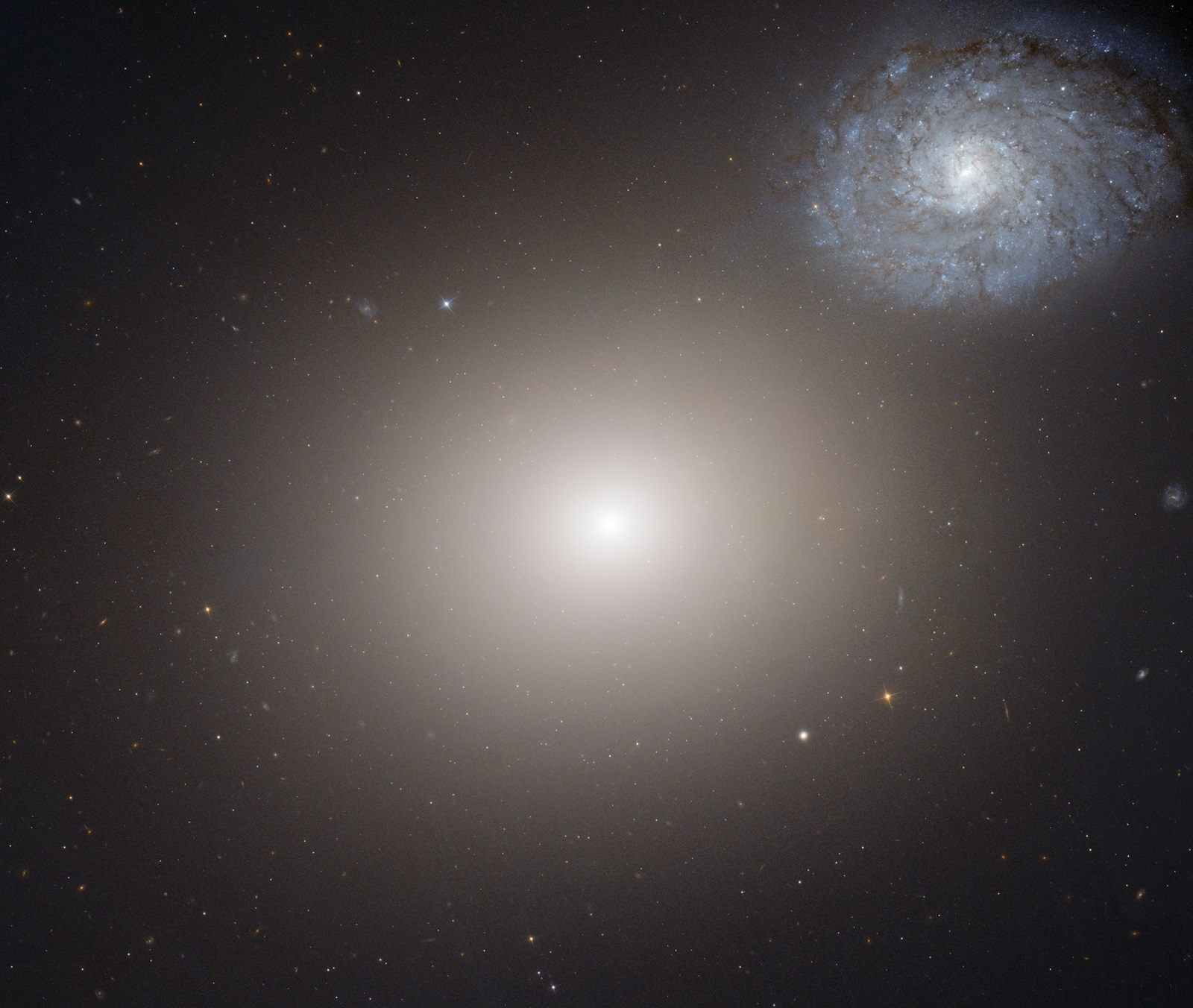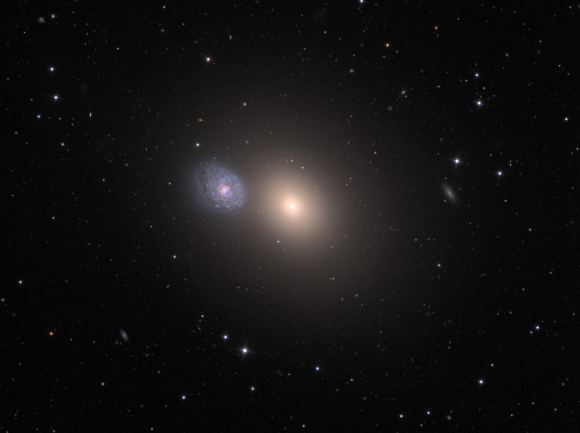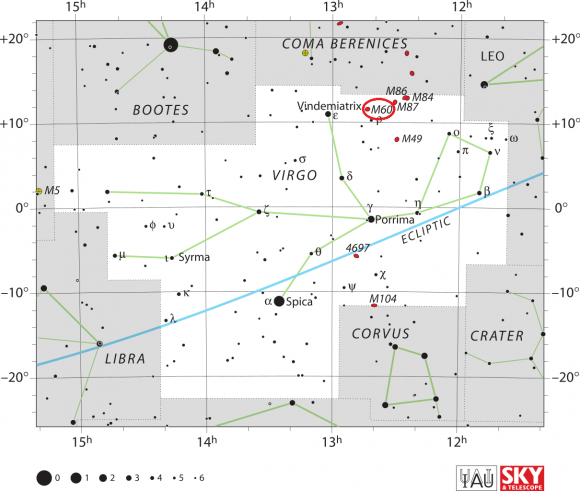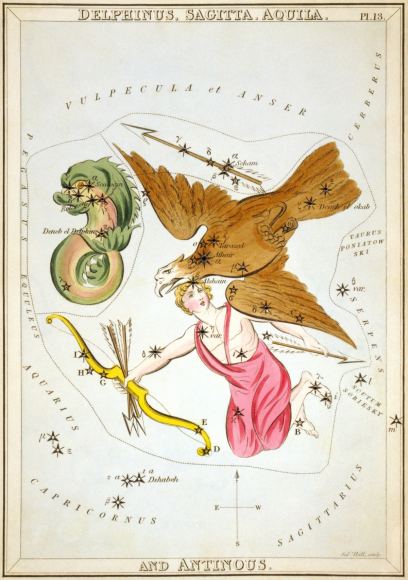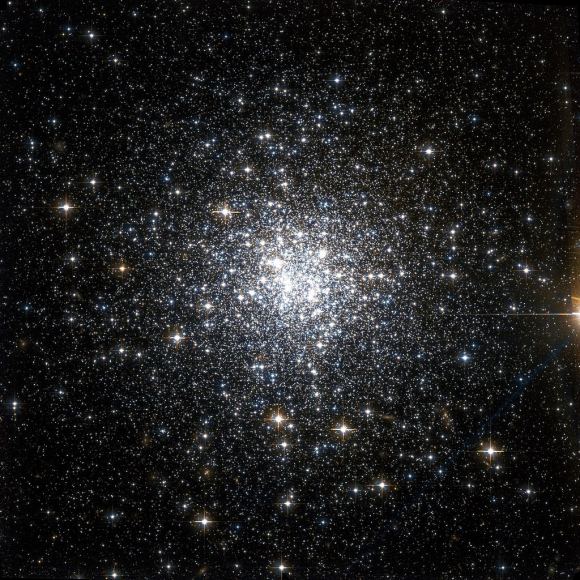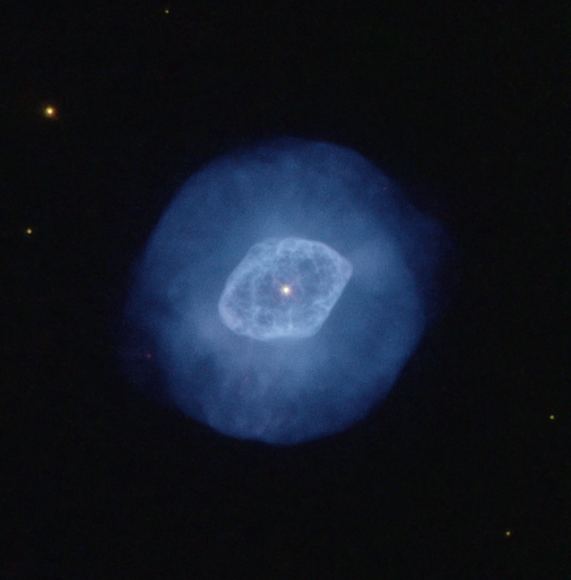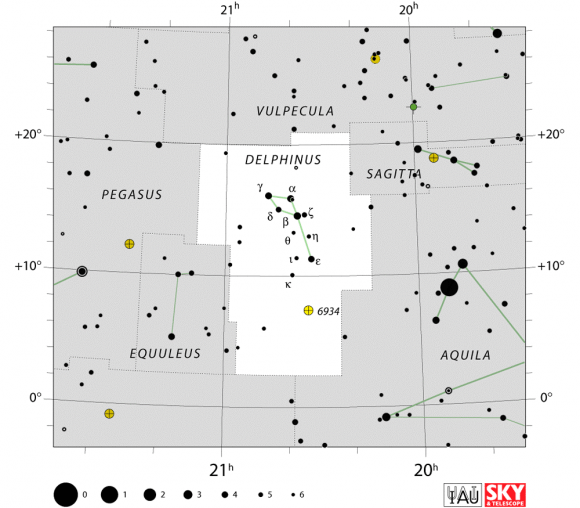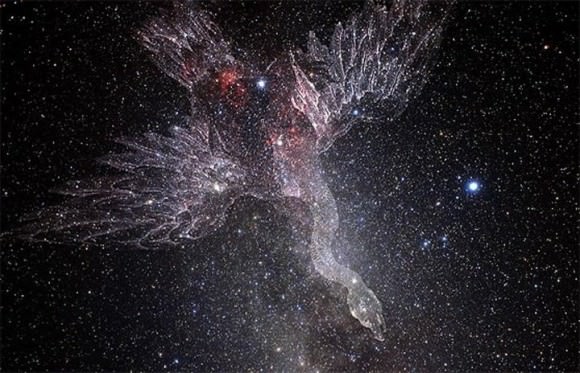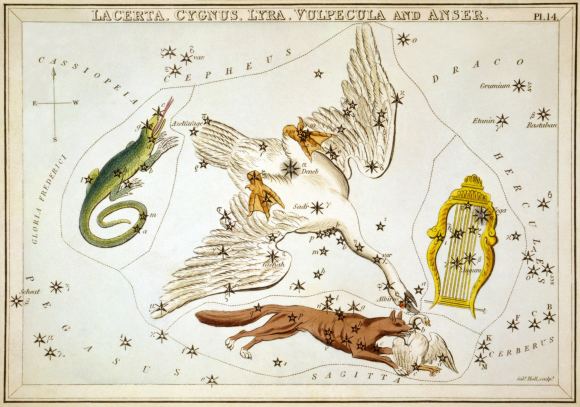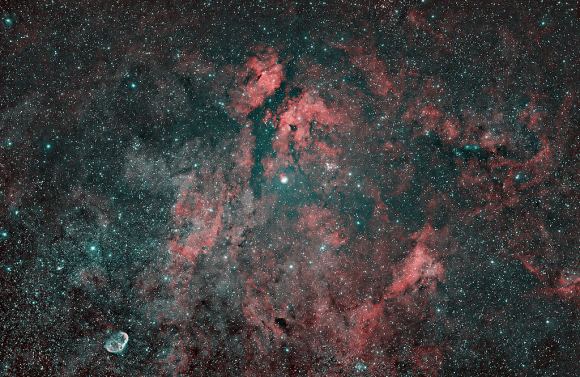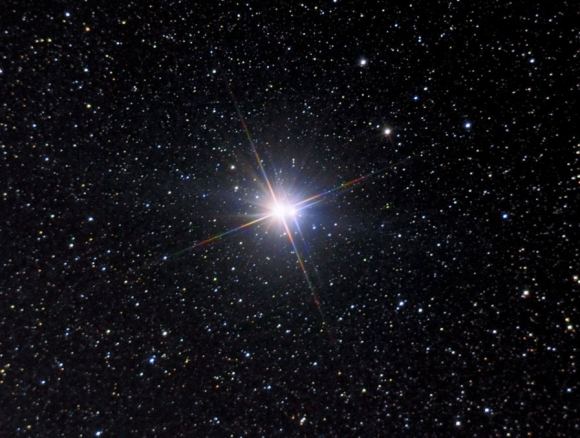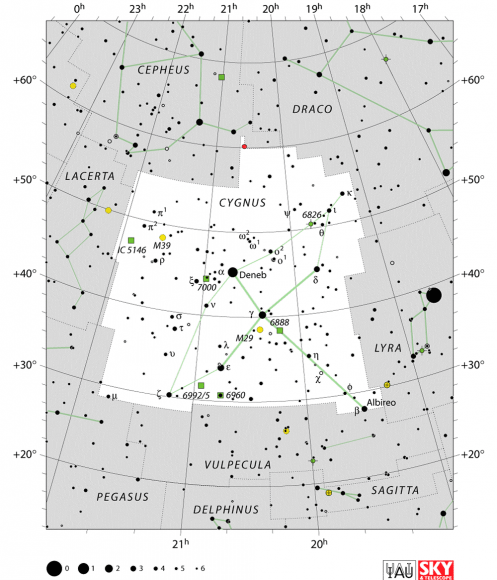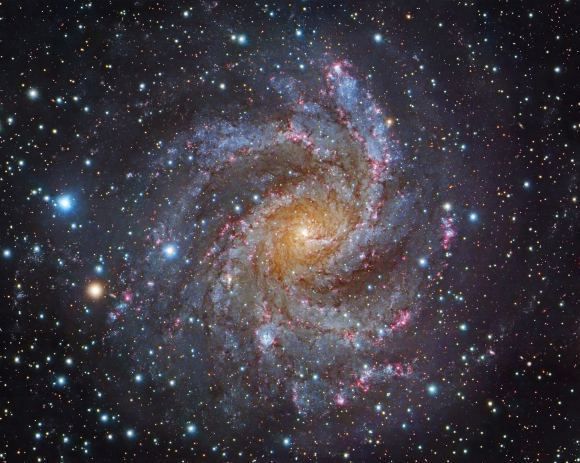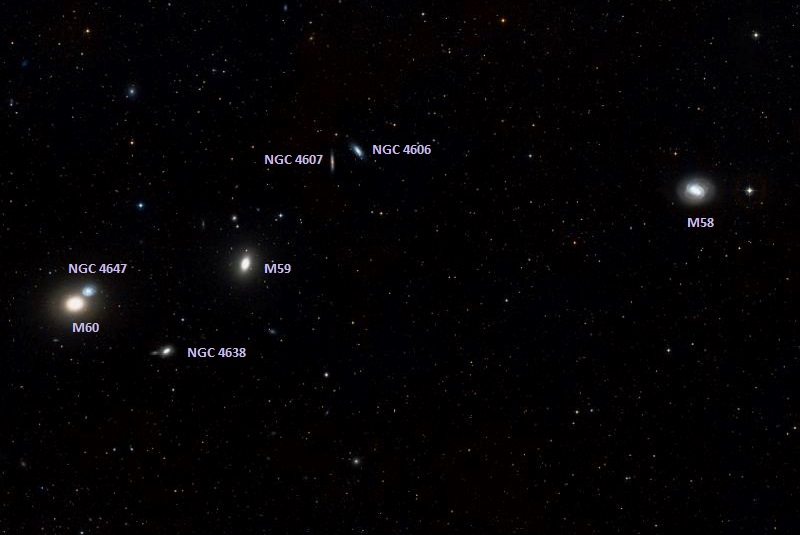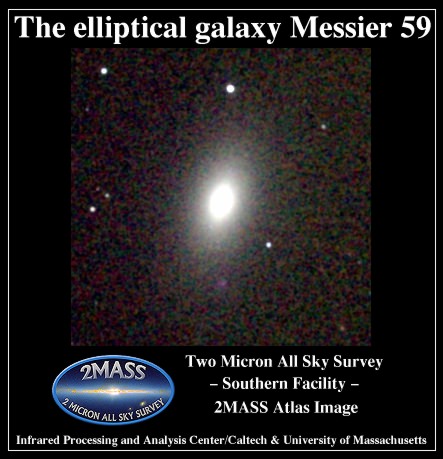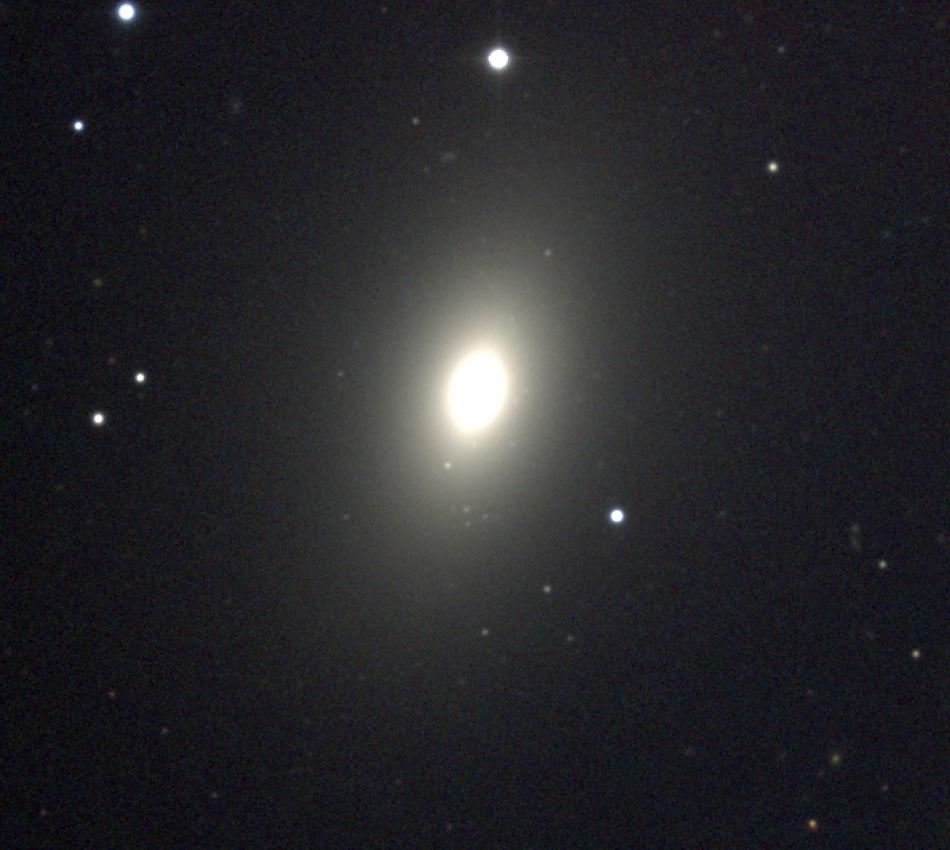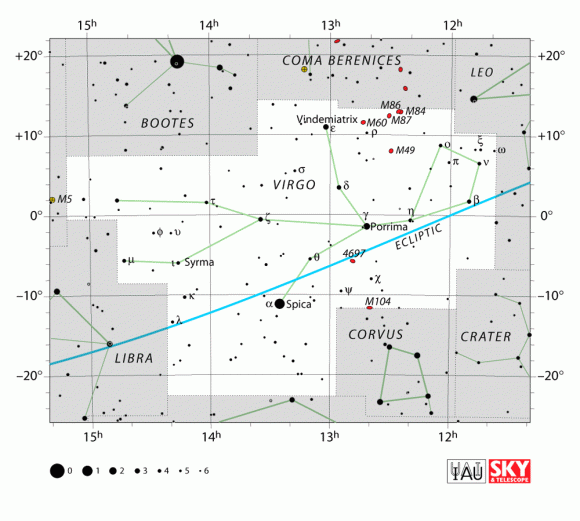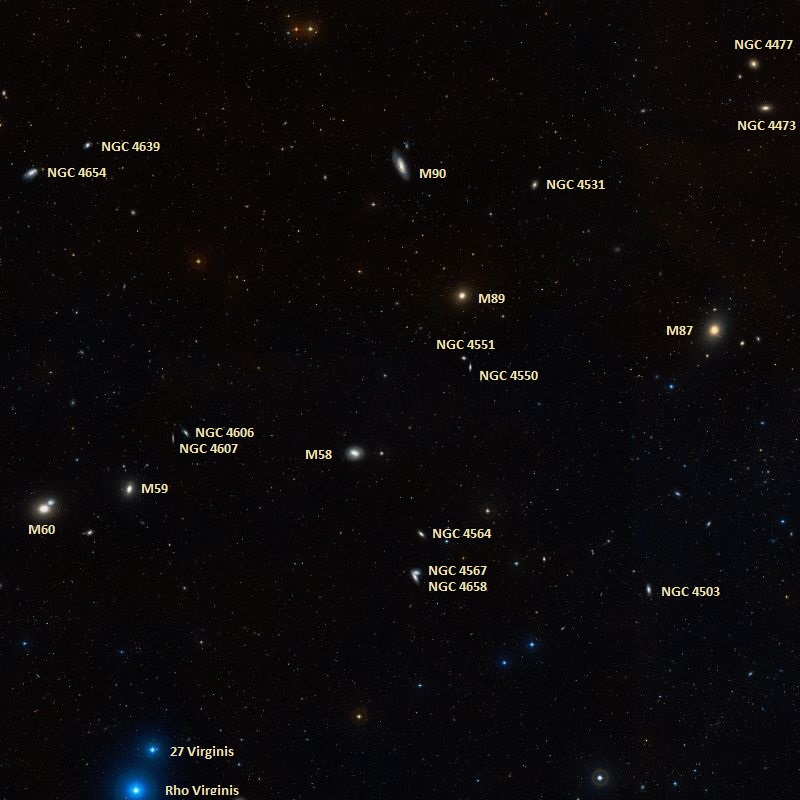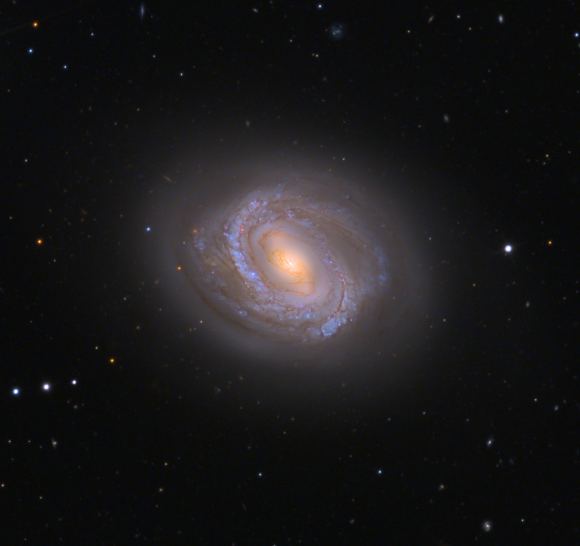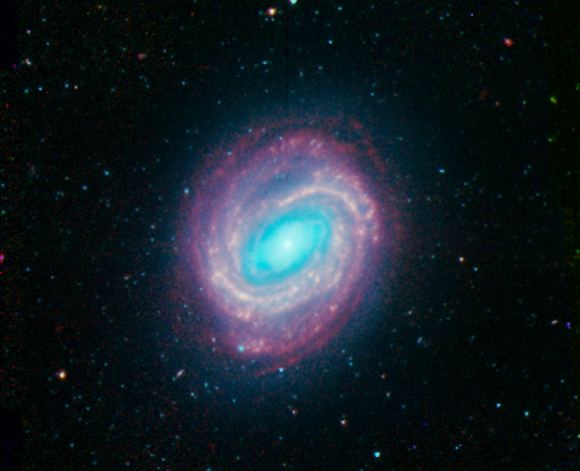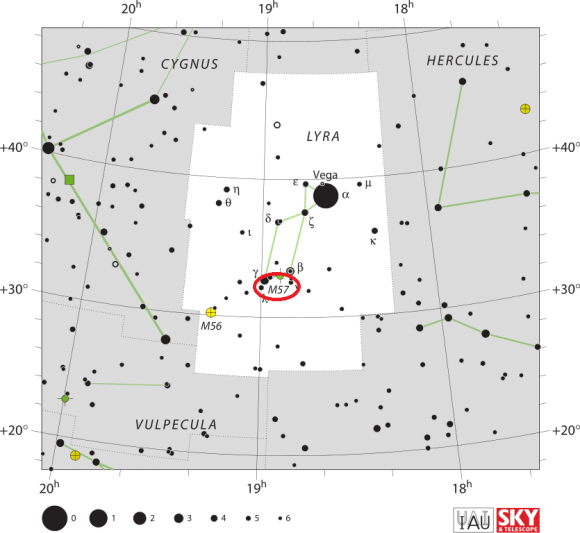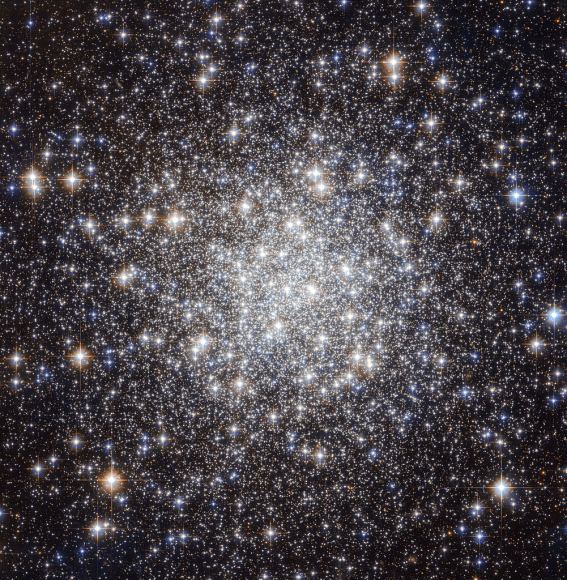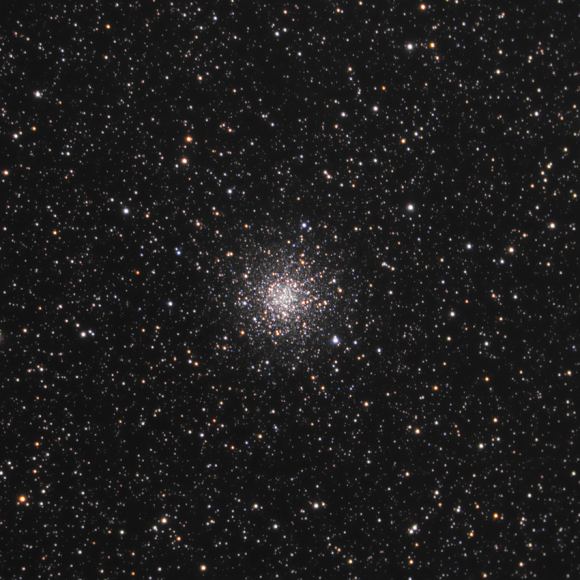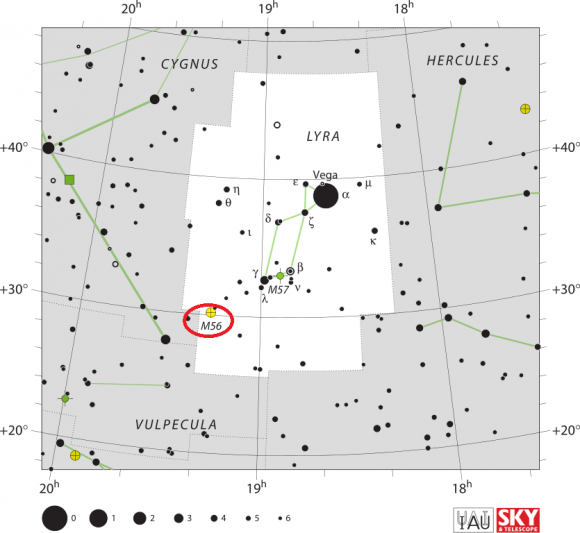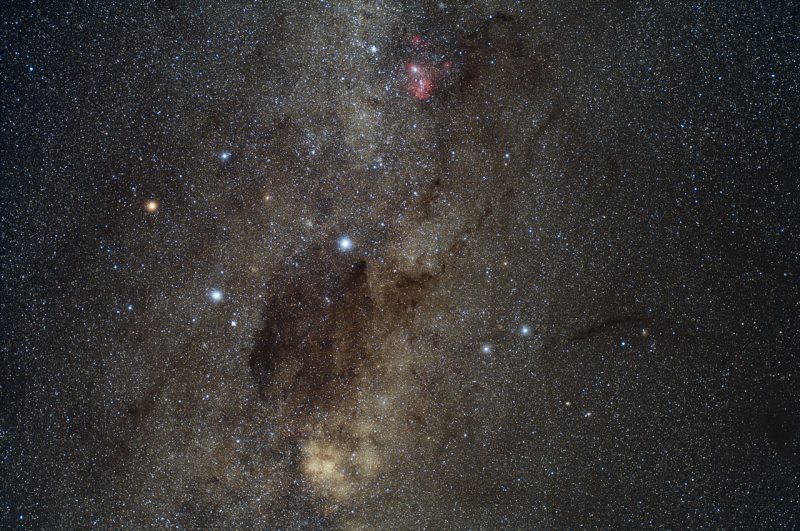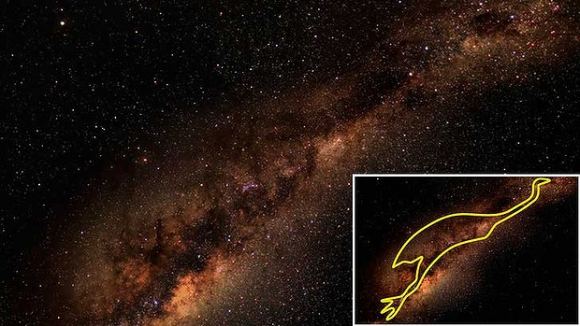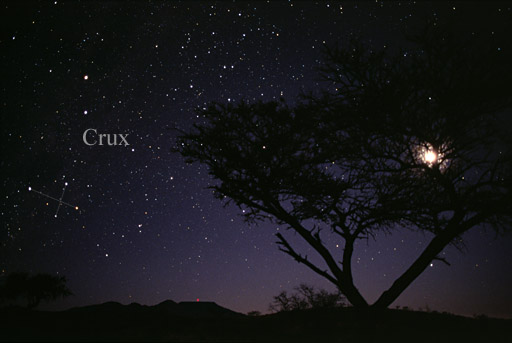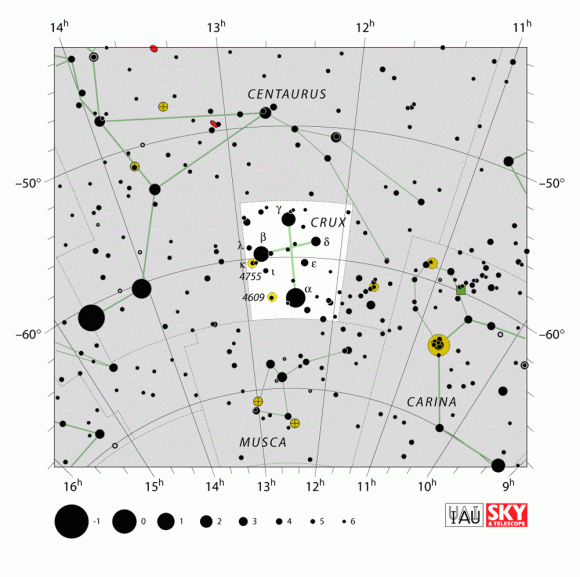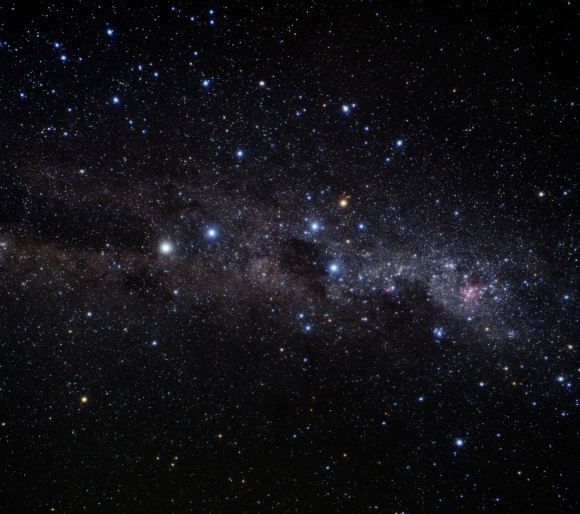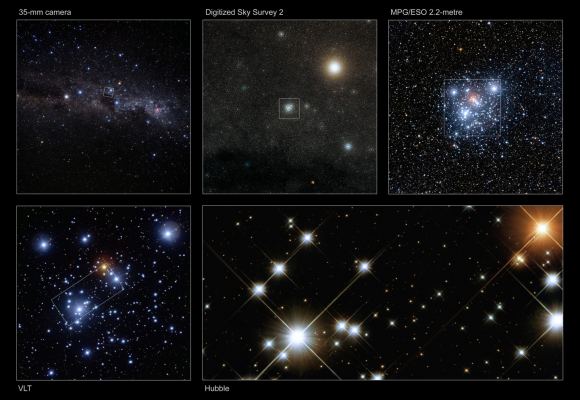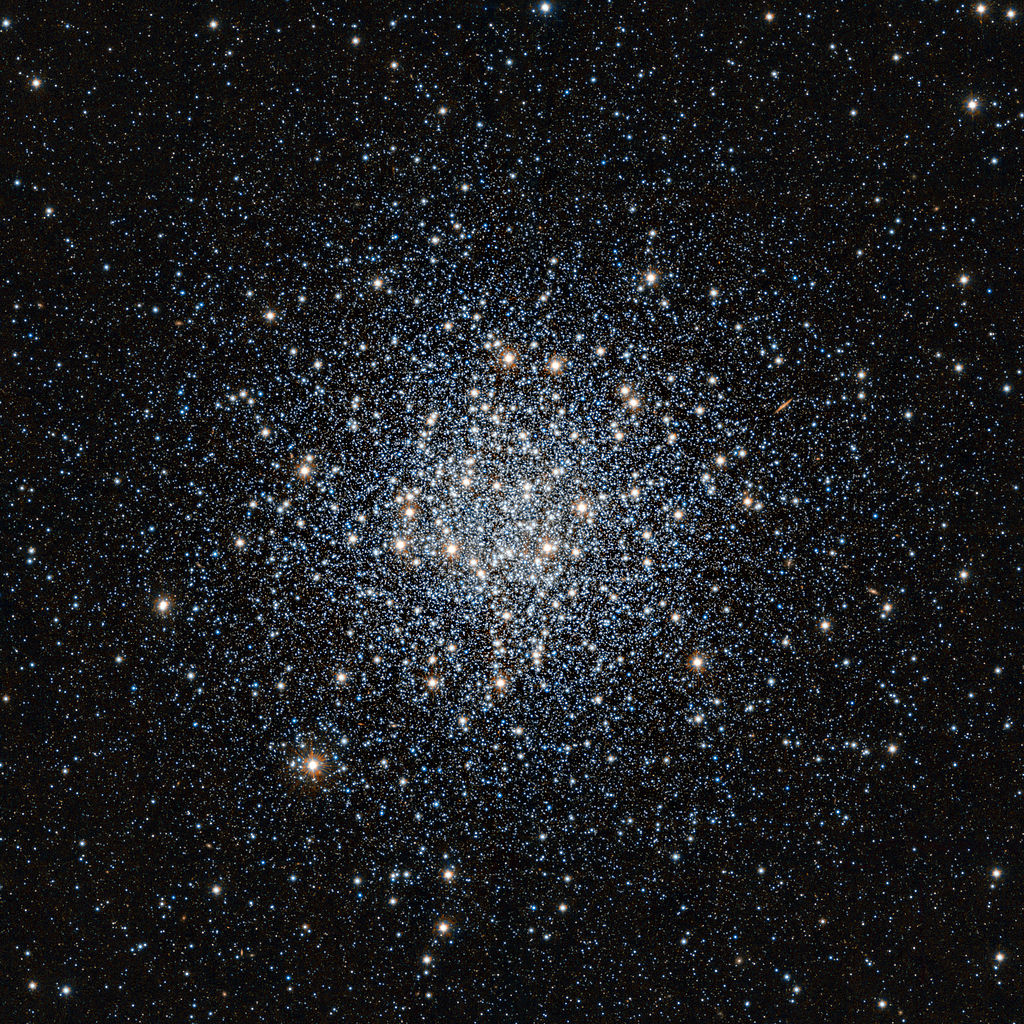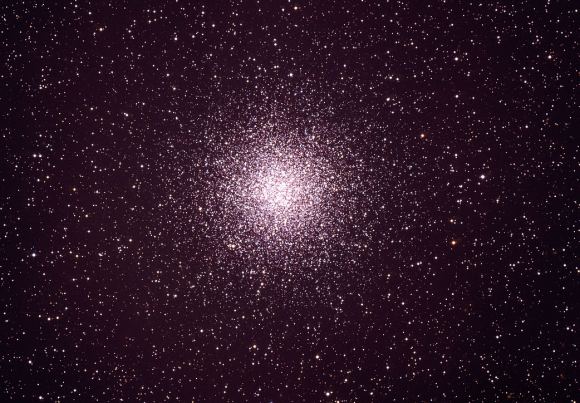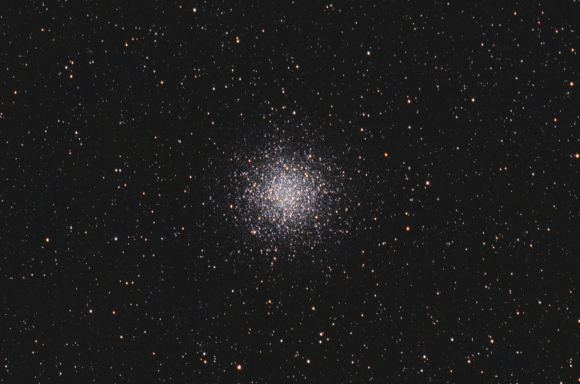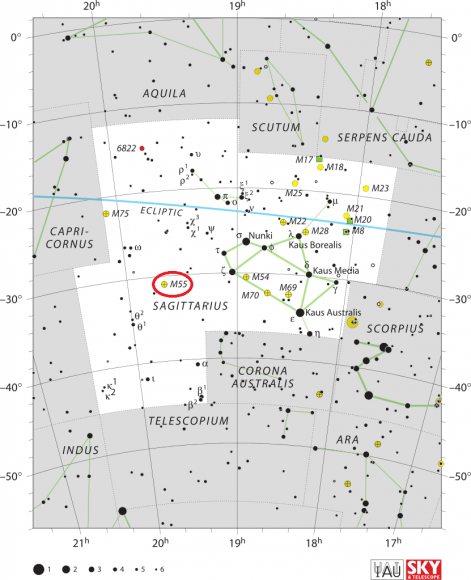Welcome back to Messier Monday! Today, we continue in our tribute to our dear friend, Tammy Plotner, by looking at the barred spiral galaxy known as Messier 61.
In the 18th century, while searching the night sky for comets, French astronomer Charles Messier kept noting the presence of fixed, diffuse objects he initially mistook for comets. In time, he would come to compile a list of approximately 100 of these objects, hoping to prevent other astronomers from making the same mistake. This list – known as the Messier Catalog – would go on to become one of the most influential catalogs of Deep Sky Objects.
One of these objects is the intermediate barred spiral galaxy known as Messier 61. As one of the larger galaxies located in the Virgo Cluster, this galaxy is roughly 52.5 million light years from Earth and contains some spectacular supernovae. It also has an Active Galactic Nucleus (AGN), meaning it has a Supermassive Black Hole (SMBH) at its center, and shows evidence of considerable star formation.
What You Are Looking At:
Spanning about 100,000 light years across and about the same size as our own Milky Way Galaxy, this grand old spiral is one of the largest in the Virgo Cluster… and one of the most active in terms of starbursts and supernovae. According to Luis Colina (et al) indicated in a 1997 study:
“A high-resolution Hubble Space Telescope WFPC2 F218W UV image of the barred spiral NGC 4303 (classified as a LINER-type active galactic nucleus [AGN]) reveals for the first time the existence of a nuclear spiral structure of massive star-forming regions all the way down to the UV-bright unresolved core of an active galaxy. The spiral structure, as traced by the UV-bright star-forming regions, has an outer radius of 225 pc and widens as the distance from the core increases. The UV luminosity of NGC 4303 is dominated by the massive star-forming regions, and the unresolved LINER-type core contributes only 16% of the integrated UV luminosity. The nature of the UV-bright LINER-type core—stellar cluster or pure AGN—is still unknown.”
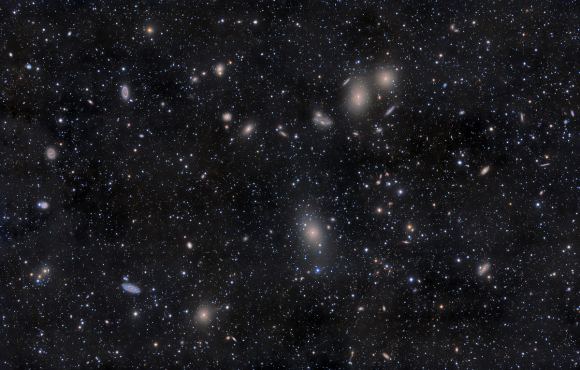
Another fascinating aspect is Colina’s team has also identified a Super Star Cluster (SSC) withing Messier 61 as well. As Colina indicated in a 2002 study:
“These new HST/STIS results unambiguously show the presence of a compact SSC in the nucleus of a low-luminosity AGN, which is also its dominant ionizing source. We hypothesize that at least some LLAGNs in spirals could be understood as the result of the combined ionizing radiation emitted by an evolving SSC (i.e., determined by the mass and age) and a black hole accreting with low radiative efficiency (i.e., radiating at low sub-Eddington luminosities) coexisting in the inner few parsecs region. Complementary multifrequency studies give the first hints of the very complex structure of the central 10 pc of NGC 4303, where a young SSC apparently coexists with a low-efficiency accreting black hole and with an intermediate/old compact star cluster and where, in addition, an evolved starburst could also be present. If structures such as those detected in NGC 4303 are common in the nuclei of spirals, the modeling of the different stellar components and their contribution to the dynamical mass has to be established accurately before deriving any firm conclusion about the mass of central black holes of few to several million solar masses.”
Of course, studies don’t just stop there. As D. Tschoke (et al) indicated in a 2000 study:
“The late-type galaxy NGC 4303 (M61) is one of the most intensively studied barred galaxies in the Virgo Cluster. Its prominent enhanced star formation throughout large areas of the disk can be nicely studied due to its low inclination of about 27 degr. We present observations of NGC 4303 with the ROSAT PSPC and HRI in the soft X-ray (0.1-2.4 keV). The bulk of the X-ray emission is located at the nuclear region. It contributes more than 80% to the total observed soft X-ray flux. The extension of the central X-ray source and the L_X/L_Halpha ratio point to a low luminous AGN (LINER) with a circumnuclear star-forming region. Several separate disk sources can be distinguished with the HRI, coinciding spatially with some of the most luminous HII regions outside the nucleus of NGC 4303. The total star formation rate amounts to 1-2 Msun/yr. The X-ray structure follows the distribution of star formation with enhancement at the bar-typical patterns. The best spectral fit consists of a power-law component (AGN and HMXBs) and a thermal plasma component of hot gas from supernova remnants and superbubbles. The total 0.1-2.4 keV luminosity of NGC 4303 amounts to 5×10^40 erg/s, consistent with comparable galaxies, like e.g. NGC 4569.”
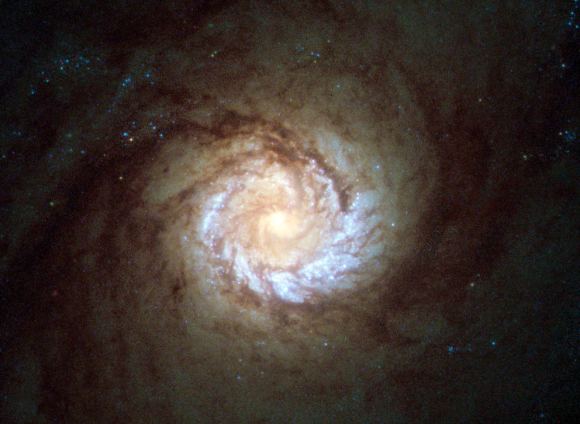
When it comes right down to it, it’s all about that star-forming ring. Said Eva Schinnerer (eta al) in a 2002 study:
“The UV continuum traces a complete ring that is heavily extincted north of the nucleus. Such a ring forms in hydrodynamic models of double bars, but the models cannot account for the UV emission observed on the leading side of the inner bar. Comparison with other starburst ring galaxies where the molecular gas emission and the star-forming clusters form a ring or tightly wound spiral structure suggests that the starburst ring in NGC 4303 is in an early stage of formation.”
How will today’s technologies continue to study the magnificent M61? Just take a look at what MOS can do! The very efficient multi-object-slit observing technique with the multi-mode instrument FORS1 has been demonstrated on the Virgo cluster galaxy NGC 4303 . Nineteen moveable slits at the instrument focal plane are positioned so that the faint light from several H II regions in this galaxy can pass into the spectrograph, while the much stronger “background” light (from the nearby areas in the galaxy and, to a large extent, from the Earth”s upper atmosphere) is blocked by the mask.
History of Observation:
M61 was discovered by Barnabus Oriani on May 5, 1779 when following the comet of that year. Said he, “Very pale and looking exactly like the comet.” As for our hero, Messier, he had also seen it on the same night – but thought it was the comet! Because Charles Messier was a good astronomer, he returned nightly to observe movement and it only took him a few days to realize his mistake and to admit it in his own notes:
“May 11, 1779. 61. 12h 10m 44s (182d 41′ 05″) +5d 42′ 05″ – Nebula, very faint & difficult to perceive. M. Messier mistook this nebula for the Comet of 1779, on the 5th, 6th and 11th of May; on the 11th he recognized that this was not the Comet, but a nebula which was located on its path and in the same point of the sky.”
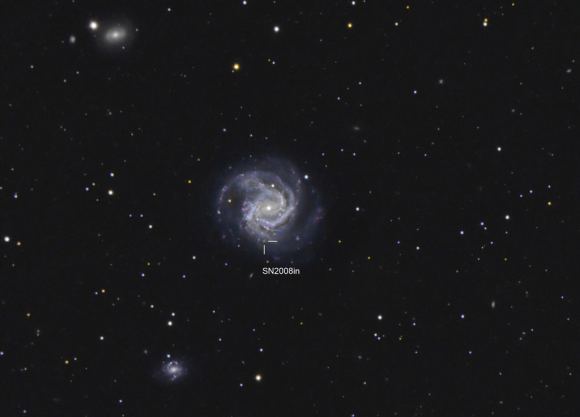
Sir William and Sir John Herschel would also later return to M61 to assign it their own catalog numbers, both resolving certain portions of this wonderful galaxy – but neither truly beginning to understand what they were seeing. That took Admiral Smyth, who recorded in his notes:
“A large pale-white nebula, between the Virgo’s shoulders. This is a well defined object, but so feeble as to excite surprise that Messier detected it with his 3 1/2 foot telescope in 1779. Under the best action of my instrument it blazes towards the middle; but in H. [John Herschel]’s reflector it is faintly seen to be bicentral [an illusion caused by the bar], the nuclei 90″ apart, and lying sp [south preceding, SW] and nf [north following, NE]. It is preceded by four telescopic stars, and followed by another. Differentiated with the following object [17 Virginis], from which it bears about south by west, and is within a degree’s distance. This object is an outlier of a vast mass of discrete but neighboring nebulae, the spherical forms of which are indicative of compression.”
Locating Messier 61:
Locating Messier 61 is the Virgo Galaxy fields is relatively easily because it is so large and bright compared to any others in the area. Begin your hunt by identifying Beta and Delta Virginis. Between this pair you will see finderscope or binocular visible stars 17 and 16 Virginis. You destination is between this pair of stars. While M61 is binocular possible, it would require astronomical binoculars of approximately 80mm aperture and dark skies – although with excellent sky conditions the nucleus can be glimpsed with apertures as small as 60mm.
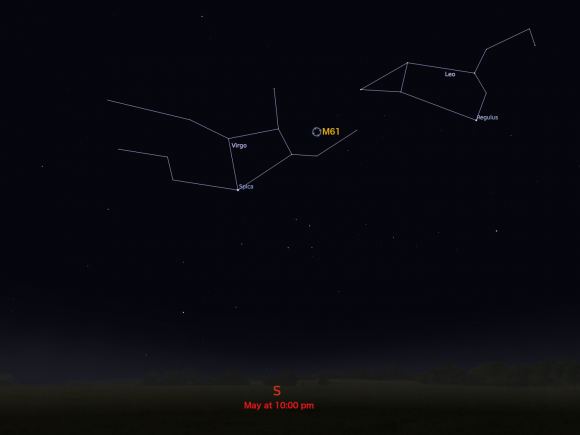
In a small aperture telescope, M61 will appear as a very faint oval with a bright central region. As size increases, so do details and resolution. At 6-8″ in size, the nucleus becomes very clear and beginnings of spiral arms start to resolve. In the 10-12″ range, spiral structure becomes clear and some mottling texture becomes clear.
Enjoy your observations!
And here are the quick facts on Messier 61 to help you get started:
Object Name: Messier 61
Alternative Designations: M61, NGC 4303
Object Type: Type SABbc Spiral Galaxy
Constellation: Virgo
Right Ascension: 12 : 21.9 (h:m)
Declination: +04 : 28 (deg:m)
Distance: 60000 (kly)
Visual Brightness: 9.7 (mag)
Apparent Dimension: 6×5.5 (arc min)
We have written many interesting articles about Messier Objects here at Universe Today. Here’s Tammy Plotner’s Introduction to the Messier Objects, M1 – The Crab Nebula, and David Dickison’s articles on the 2013 and 2014 Messier Marathons.
Be to sure to check out our complete Messier Catalog. And for more information, check out the SEDS Messier Database.
Sources:

